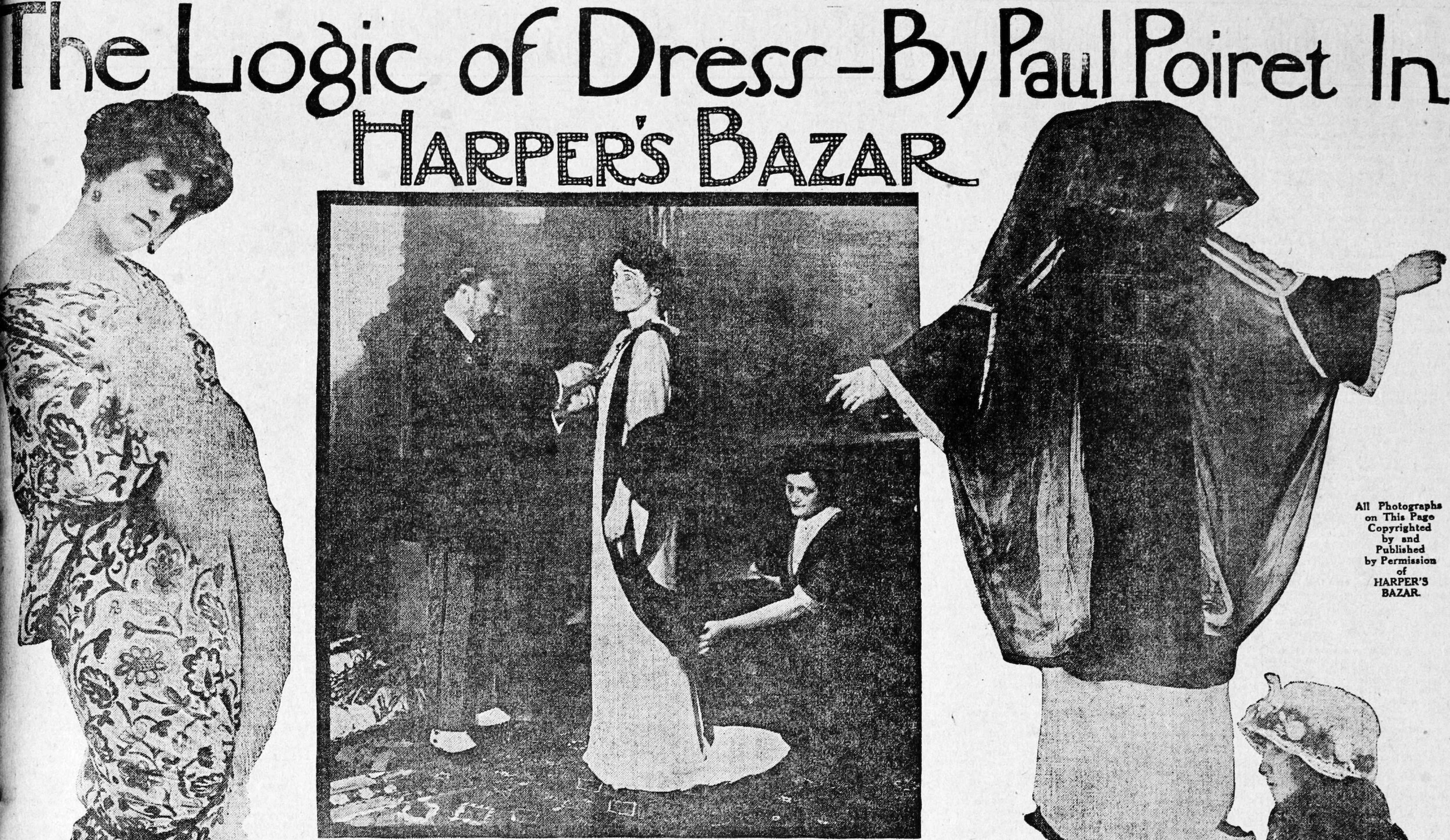Loose-fitting clothes and no corsets! Who was Paul Poiret?
We all know at some point in history the humble corset ceased to exist and suddenly women were toting wired bras instead, but do we know one of the players in this change? Paul Poiret was one of them. Born in Paris in 1879, Poiret became a leading fashion designer and couturier during the turn of the 20th century. His work is deemed very important to the fashion world, as he opted for silhouettes different from the late Victorian era norm.
Paul Poiret c.1913
His journey into the world of clothes began when he was an apprentice umbrella maker. Now that’s a job you don’t hear about all too often. He familiarized himself with dressmaking for dolls using spare fabric scraps; this was the beginning of his journey. Poiret graduated onto selling clothing sketches to fashion houses until he was finally hired by Jacques Doucet in 1898. His real fame came from his design being worn by actress Réjane in the play Zaza.
Poiret moved to the House of Worth in 1901. Now, we all know and love Charles Worth – his gowns are to forever be admired! But how many of us knew the humble Poiret worked alongside him? Poiret was responsible for designing more simple garments, let’s face it, these were too conservative for him. The turning point for the French designer was when he fashioned a kimono-like dress for the Russian princess and she exclaimed ‘What a horror!’ If it were not for Princess Bariatinsky being upfront, Poiret would never have funded his own Maison! Thank God she was rude.
1912 evening dress © Victoria and Albert Museum, London
This brings us to the French designer’s most influential work. He changed the rigid rules of women’s dress, in 1903 he dismissed the petticoat and then in 1906 it was away with the corset. To us, with our 21st-century view, it’s more obscure to see a corset (although Depop is helping them comeback as outerwear), however, at the time the idea of a woman without one was oh-so-improper! What we know Poiret for are his baggy gowns that are draped off of the female figure.
In October 1908 the publication ‘Les Robes de Paul Poiret’ was release, Poiret was still not a household name at this time, however, these illustrations were about to change that. In collaboration with Paul Iribe, the innovative designs were translated to page and thus immortalized. Iribe used a printing method that allowed for saturated colour, this combined with the style of illustration allowed the publication to be very influential.
It must be noted that in 1908 Poiret also introduced the high-waisted silhouette that had never been seen before. The evening dresses were all based upon the past, which designers of the time rarely did – most designs were looking forward to the future. They featured high waists, covered arms and low décolletés. No more S-bend shape for the daring women of the time, now they could be unbound.
Poiret also looked to the East for inspiration. He even claimed to be a Persian prince in a past life – like his designs, he loved the dramatics. In 1910 the Ballet Reusse performed at the Paris Opera. Their costumes were sheer (yes, nipples could be seen – gasp!) and involved Eastern references and loose-fitting shapes. These silhouettes, motifs and colours all began appearing within Poiret’s designs too. This phase before the 1920s really saw a quick change within women’s styles, society was beginning to develop.
"The logic of dress- by Paul Poiret in Harper's Bazar." December 7, 1913. The Salt Lake Tribune (Salt Lake City, UT), Image 47. Chronicling America: Historic American Newspapers.
However, like all good stories, there comes an end. In early WW1 Poiret left his fashion house to serve in the military. In 1919 he returned and the business was broke, this was not helped by the rise of new designers such as Chanel. Chanel was capitalizing on simple and functional clothes, ones that could be worn day today. These surpassed Poirets elaborate creations – they also put his manufacturing to shame. It is said that Poiret wanted his designs to be ‘readily beautiful from afar’, and that his construction could have been better. I guess you can’t be good at everything.
Sadly, by the time of his death in 1944, his legacy was forgotten. Parisian society left him and his genius behind, leaving him to do odd jobs like painting and sketches for local cafés. His friend (and famed designer) Schiaparelli paid for his funeral in a last bid effort to keep his memory alive.
Poiret is still remembered, his designs did free women from corsets (not singlehandedly, however) and he was a pioneer of the draping technique. Fashion designers and students alike still use him as inspiration to this day. His creativity was ‘a pivotal moment in the emergence of modernism’ and will not be forgotten.


